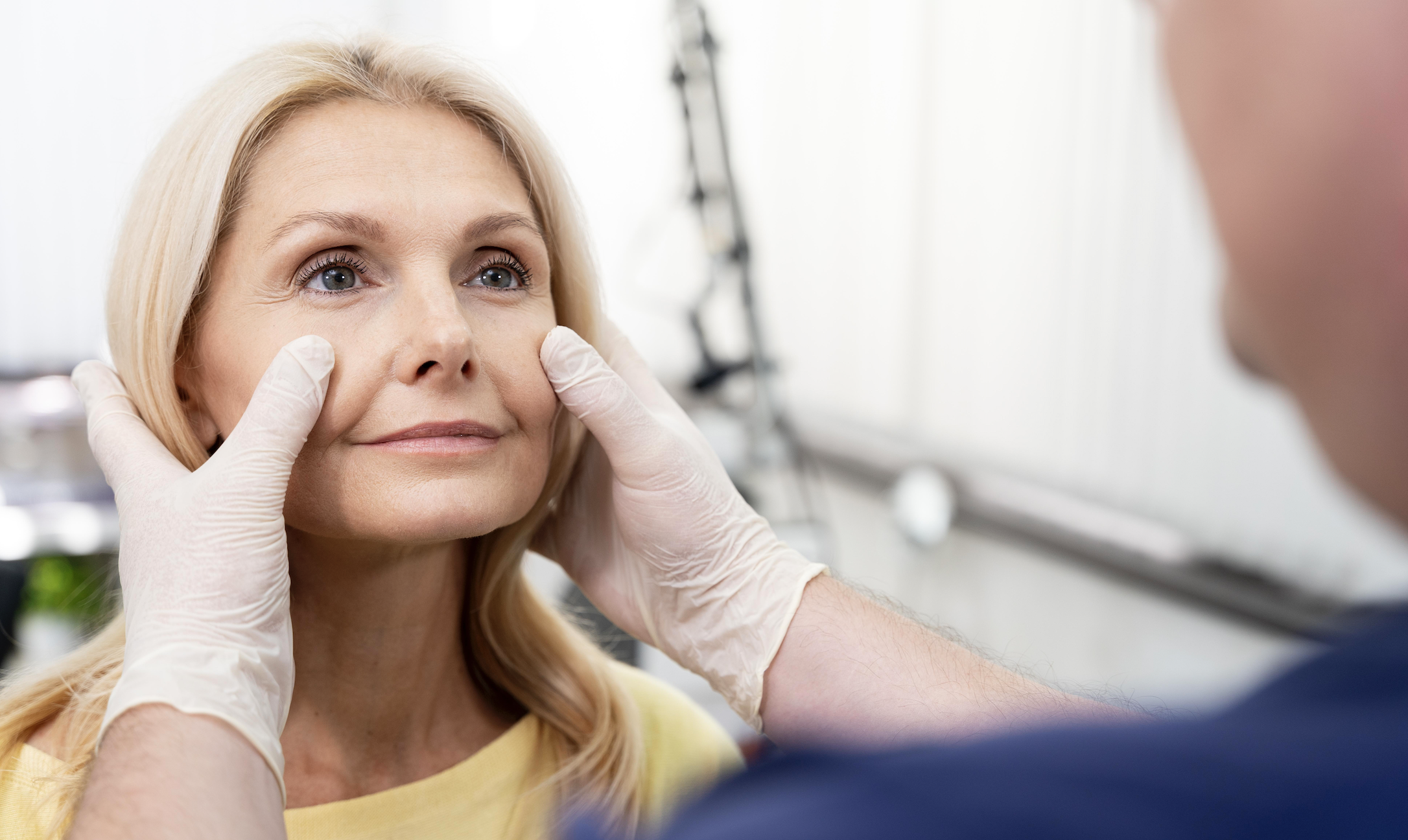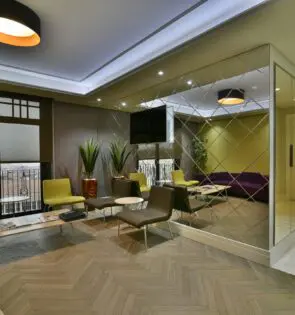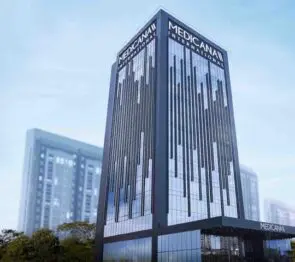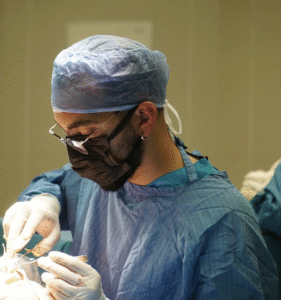Facelift in Turkey — Types of Procedures, Key Features, and Real Results
Facelift (face lifting) is a plastic surgery procedure aimed at rejuvenating the face and restoring its defined contours. Despite the wide range of non-invasive techniques available, surgical facelift remains the most effective method for combating signs of aging—especially in cases of significant tissue sagging. The results are incomparable to those of other treatments such as facial exercises, anti-aging creams, or hardware-based cosmetology.
Facial contour lifting in Turkey is in high demand due to the high standards of medical centers, the expertise of Turkish plastic surgeons, and affordable pricing.
Indications and Contraindications for the Surgery

Main Indications for the Procedure — noticeable signs of aging, such as:
-
Sagging facial contours, jowls
-
Skin laxity, deep wrinkles, sagging in the cheek area
-
Drooping eyebrows
-
Forehead ptosis
-
Excess skin folds in the cheeks and chin area
-
Loose skin around the ears
Before the age of 45, it is generally recommended to consider alternative, less invasive treatments such as non-surgical facelift techniques, mesotherapy, or lipofilling.
Contraindications to the Procedure:
-
Cancer or benign tumors
-
Cardiovascular diseases
-
Infectious skin conditions
-
Blood clotting disorders
-
Inflammatory processes
-
Pregnancy and breastfeeding
What Is the Right Age for a Facelift?
The optimal age for a facelift is between 35 and 55, when lasting changes in facial contours typically begin to appear. However, it’s highly individual—those with a genetic predisposition or who have experienced significant weight loss may need the procedure earlier.
Facelift is not performed:
-
Before the age of 18
-
After the age of 80 (due to anesthesia-related risks and poor tissue elasticity)
Types of Surgical Facelift
In Turkey, modern and gentle facelift techniques are available, including:
Endoscopic Facelift
A minimally invasive method to reduce wrinkles using plastic surgery. The essence of the technique is the detachment, repositioning, and fixation of the subcutaneous (soft) tissues using an endoscope. The device is a thin tube equipped with a camera. It is inserted into the correction area through a small incision. The image is displayed on a monitor, allowing the surgeon to fully control the procedure. The method involves excising excess skin and redistributing the subcutaneous layer.
Incisions in endoscopic facelift are usually made through small punctures (about 1–2 cm) in the hair-bearing area of the head, above the temples, and/or behind the ears, which helps to conceal postoperative scars.
Main types of endoscopic facelift:
-
Brow-lift — involves the upper third of the face; incisions are made in the hairline of the forehead or behind the hairline.
-
3D mask lift — correction of the midface area; incisions are located in the hair-bearing part of the head and near the temples.
-
Neck-lift — lifting of the lower third of the face; access through small incisions behind the ears and under the chin.
SMAS Facelift
differs from the endoscopic facelift in that the surgeon works not only with the skin but also with the muscle-aponeurotic layer (SMAS). Thus, it is suitable for patients with more pronounced age-related changes. The effect of the SMAS facelift also lasts much longer.
Incisions in SMAS facelift run along natural folds: along the hairline at the temples, around the ear — in front of and behind the ear, sometimes extending into the hair-bearing area behind the ear.
Deep Plane Facelift
An innovative lifting technique targeting the deepest layers, which allows better lifting, strengthening, and contouring of the face. The deep plane is the space between the superficial layer (SMAS) and the facial expression muscles.
Incisions in Deep Plane facelift coincide with those in the SMAS facelift — natural folds along the hairline and around the ears, ensuring minimal visible scarring.
Most experienced surgeons master all these surgical techniques, so they can recommend the most relevant method for each patient’s case.
The decision is made jointly with the plastic surgeon.
How Threads and Fillers Can Affect Facelift Results
Nowadays, more and more women take care of their appearance and regularly visit cosmetologists to maintain a youthful look. The most popular non-surgical procedures remain filler injections (used for volume restoration and facial contouring) and thread lifting (a non-surgical way to tighten the skin). While these methods do provide temporary rejuvenating effects, they can significantly impact a future surgical facelift (rhytidectomy), if the patient eventually opts for one.
Fillers—especially when injected repeatedly—can migrate within the tissues, cause lumps, or even lead to inflammation. This alters the natural anatomy of the face and makes precise surgical modeling more difficult. In the case of threads, the main issue is the formation of fibrotic tissue—dense scarring that restricts the mobility of the skin and underlying fat layers. Surgeons often need to remove the old threads and work with altered tissue structures, which adds complexity to the procedure.
As a result, the surgery may take 1.5–2 hours longer than usual. This means a longer time under anesthesia for the patient and potentially a more challenging recovery.
It is extremely important to inform your surgeon in detail about all previous cosmetic procedures before undergoing a facelift. Be honest about what products were used, when threads were placed, and which areas were treated. This information will help the surgeon plan the operation accurately and reduce potential risks.
Skin Characteristics: Thin vs. Thick — What You Need to Know Before a Facelift
Skin type plays a crucial role in planning and achieving good facelift results. Experienced surgeons always consider the thickness and elasticity of a patient’s skin when choosing the surgical approach. Generally, patients fall into two categories: those with thin skin and those with thick (dense) skin. Each type has its own features, advantages, and potential challenges.
Thin Skin
Advantages:
-
Thin skin is more pliable, making it easier to stretch and fixate, which simplifies the facelift procedure.
-
It better “settles” into its new position, so the immediate postoperative result often looks especially impressive.
Challenges:
-
Thin skin has a lower density of collagen fibers and may stretch more over time, especially if postoperative care instructions are not followed.
-
Over-tightening can cause hypercorrection, where the skin appears unnaturally “pulled.”
-
Any irregularities, suture marks, or swelling can be more visible in patients with thin skin.
What’s important:
-
For thin skin, surgeon experience is particularly critical—they must skillfully adjust tissue tension to avoid unnatural folds and ensure a lasting effect.
Thick Skin
Advantages:
-
Thick skin contains more collagen, holds shape better, and provides a more stable and long-lasting facelift result.
-
It is less prone to sagging and stretching in the following years.
Challenges:
-
Due to its density, thick skin is less flexible. Surgeons need to work deeper and more intensively, which requires advanced skills.
-
Because of tissue resistance, stronger tension is often necessary to achieve the desired lift, potentially increasing surgery and recovery times.
What’s important:
-
Having thick skin is not a reason to avoid surgery, but precise calculation of tension is needed to prevent excessive pressure on incision edges and sutures.
Possible Complications After a Facelift
Facelift is a surgical procedure, and like any operation, it may involve temporary side effects or complications. It is important to understand that most complications are temporary and can be successfully managed if all doctor’s recommendations are followed carefully.
You can watch a video featuring one of our patients who underwent an endoscopic midface and brow lift in Turkey. In the video, we explain the key features of the procedure, the recovery stages, and pre-operative preparation, as well as show real results. This will help you better understand how the surgery is performed, how long the recovery takes, and what to consider when choosing a clinic.
You can find more beautiful and honest results on our YouTube channel and Instagram page. We regularly share patient testimonials, surgery videos, and recovery progress updates there.
Most Common Complications
Swelling and Hematomas
It is normal for the soft tissues of the face to swell after surgery—this is a natural response of the body. Moderate hematomas (localized blood collections) may also occur, especially in areas of active facial movement. Usually, they resolve within 1–3 weeks. In some cases, drainage or aspiration of fluid might be necessary.
Bruising (Ecchymosis)
Bruises appear where small blood vessels were affected. They are harmless and fade on their own. Cold compresses and vascular-strengthening medications (as prescribed by the doctor) can help speed up recovery.
Skin Pigmentation
Patients with sensitive skin or a tendency to hyperpigmentation may experience darkening of the skin in the treated areas. This is usually temporary and can be managed with cosmetic treatments or lightening agents.
Rare but Possible Complications
Skin Sensation Changes
Due to minor nerve injury, numbness or tingling may be felt in certain facial areas. In most cases, sensation returns within several weeks to months.
Wound Infection
Although very rare if sterile technique is followed, infection can occasionally develop. It is treated with antibiotics, and in severe cases, surgical revision may be required.
Facial Asymmetry
Minor asymmetry can occur due to swelling or individual anatomy. If significant differences persist after full recovery, corrective procedures may be needed.
Thick Scarring and Keloids
Patients prone to scarring may develop thickened scars. This condition can be treated with corticosteroid injections, laser therapy, or other cosmetic correction methods.
Tissue Fibrosis
Especially common in patients who previously had threads or fillers. Fibrosis can complicate even tissue repositioning during surgery and prolong recovery time.
✅ Good News
Modern surgical techniques, the use of magnification, minimally invasive methods, and proper postoperative care have minimized complication risks. It is important to choose an experienced surgeon, follow all rehabilitation instructions, and always inform the doctor about any previous procedures, including cosmetic treatments.
Remember: the vast majority of side effects are temporary and disappear completely with proper care.
Features of the Rehabilitation Period
-
The typical recovery period lasts 2–3 weeks but varies individually. Healing is a unique response of each body.
-
The patient usually stays in the hospital under medical supervision for the first 24 hours, then goes home with detailed recommendations that must be followed strictly.
-
Numbness and swelling are common in the first days. Pain relievers help ease discomfort, which usually fully subsides within two weeks.
-
Sutures do not require removal as absorbable threads are used.
-
Compression bandages must be worn; the duration depends on the individual case.
-
For 2 months, swimming pools, saunas, and intense physical activity should be avoided.
-
The final result can be assessed about 2 months after surgery, by which time the skin returns to normal.
Why Choose a Facelift in Turkey?
✅ Surgeon Expertise: Turkish plastic surgeons train in Europe and the USA and hold international certifications.
✅ Modern Clinics: High-quality care meeting JCI (Joint Commission International) standards.
✅ Attractive Pricing: Facelift costs in Turkey are 2–3 times lower than in Europe or the USA.
✅ Comprehensive Service: Transfers, accommodation, translators, and aftercare support.
Considering a Facelift in Turkey?
Fill out the form below—our medical consultants will provide a free consultation, explain all stages of the surgery, and help you choose the right surgeon based on your individual case and preferences.






